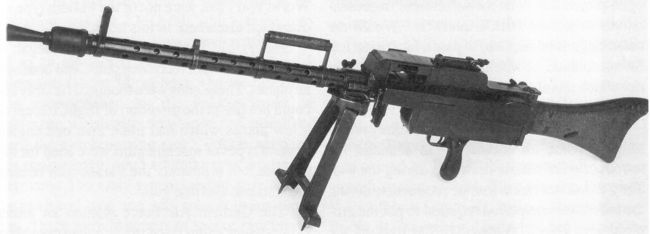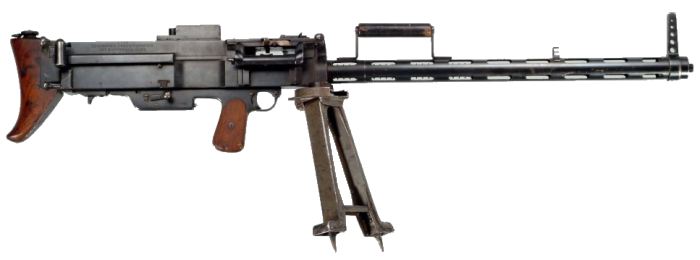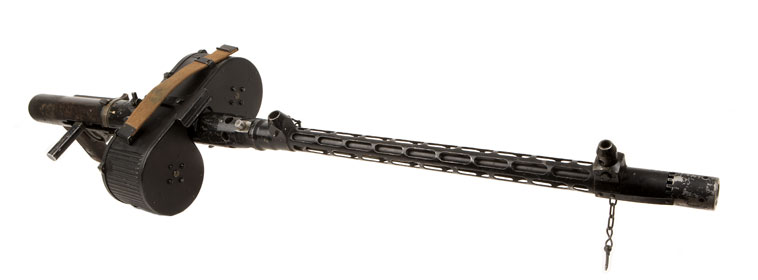German Machine Gun Nomenclature
January 8, 2014 Ian McCollum Aircraft MGs, General Purpose MGs, Heavy MGs, Light MGs 27
One would think that Germany, of all places, would have a logical and consistent system for identifying service machine guns. Any yet we see things like the WWI MG08/15 and the WWII MG15. What gives?
The answer is that Germany didn’t have one logical naming system – they had several in sequence. So in order to know what a machine gun’s name indicates, you need to know a little bit about it to begin with. Let’s start at the beginning…
When Germany first started to adopt machine guns (initially the Maxim), the designation used was “MG” and a two-digit number for the year of adoption. The applied to the short-lived early guns like the MG99 and MG01, and the best-known example is the German WWI mainstay, the MG08. The “MG” of course stands for maschinengewehr, or machine gun. When a standardized gun was modified to a new configuration, it was given a designation showing the original adoption date and the date of the new configuration. The most common example of this is the MG08/15 – an MG08 Maxim gun lightened for use as a mobile infantry gun. Another example would be the MG08/18, an MG08 modified to be air-cooled to reduce weight.

German MG08/18 machine gun (photo from world.guns.ru)
Another designation that is seen is “LMG” – or “lMG” in place of “MG”. In English, we think of LMG as meaning “light machine gun” for mobile infantry use, but in German this indicated guns lightened for aircraft mounting. Typically, this meant perforating the water jacket of a heavy infantry gun, since the rushing cold air at altitude would fully adequate for the cooling needs of a fighter’s guns. As far as I can tell, the early aerial guns were designated “LMG” with a upper-case “L”, and this stood for Luft maschinengewehr, or aircraft machine gun. Before long, the “l” went to lower-case, and stood for leicht, or light. Same application, but a different designating word. The LMG08/15 is a good example of this, the Model 1908 gun, redesigned in 1915, and then lightened for aircraft use. Note that the MG08/15 and MG08/18 were both lightened guns intended for infantry use, and thus both retained the “MG” designation.
While reasonably simple to use, this naming system became a problem in the aftermath of World War One. Germany was now strictly limited by the Versailles Treaty in what arms production it could undertake, but the nation’s leadership wanted to continue developing newer and better weaponry. The result (as it applied to machine guns) was a change in nomenclature to a system that did not reflect the year of development. Instead, gun designs would be given sequential numbers starting with the MG13. This was hoped to throw off the casual observer, who might assume (given the previous naming system) that the new guns had been developed during the war. The guns falling into this time period include the MG13, 14, 15, 16, and 17. The Flak 18 is another example from this period, named arbitrarily. Of course, this did overlap with some guns that actually were designed during WWI, like the Bergmann MG-15 and the Parabellum MG-14.

MG15 (ironically called the New Model) made by Bergmann during WWI (photo by world.guns.ru)

MG15 aircraft MG, developed during the 1920s by Rheinmetall
Starting around 1930 when Germany became more open about its rearmament efforts, new machine guns reverted back to the original dating system use the year of adoption. The MG34 was the first mass-produced example from the re-adoption of this system, and the guns developed through the end of WW2 all used this system (MG31/41, MG39, MG42, MG45, etc).
The major exception was for aircraft guns used by the Luftwaffe, which went to a wholly different system. Instead of using date-based numbers, they were given designations based on caliber. New guns would have their first one or two digits based on caliber, followed by a digit indication how many guns in that caliber had been adopted. So the first 8mm gun adopted by the Luftwaffe under this system was called the MG81. The first 13mm gun was the MG131, and the first 15mm one was the MG151. For these guns, a slash and secondary number was used to indicate a modification to change caliber. So the MG151 converted to 20mm became the MG151/20.
A few additional suffixes that are encountered are z and v. These stand for zwilling (twin) and vierling (quadruple) and indicated multiple guns housed in a single mount. In the case of the MG81Z, the guns were set up as mirror images of each other, with one feeding from the left and one form the right.




